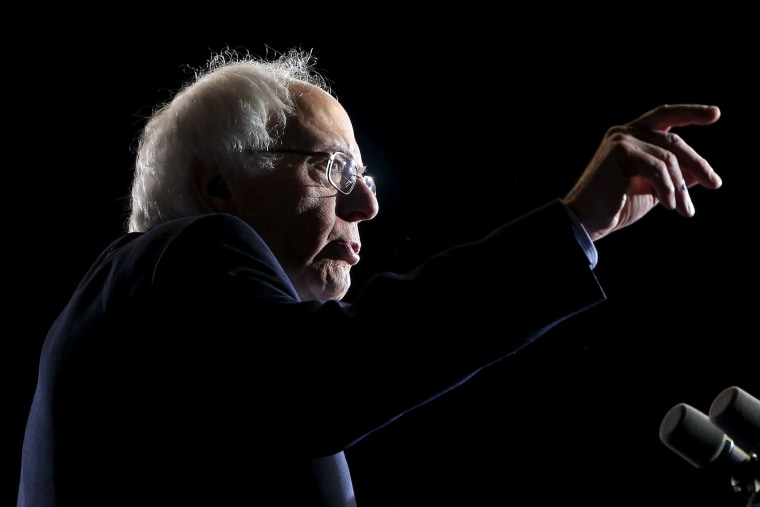Democratic presidential Bernie Sanders rolled out an expansive climate plan Monday that aims to cut U.S. carbon emissions 80% by 2050 and create 10 million clean energy jobs.
To accomplish these goals, the 16-page plan takes a kitchen sink approach, including everything from a tax on carbon to a ban on fracking to a push for more walkable cities.
And beyond the environmental goals, the plan has a political one, too -- to enfeeble the fossil fuel industry, whom Sanders says has “bribed politicians into ignoring [climate] science”
“Climate change is the single greatest threat facing our planet,” the plan states. But it hasn’t been solved because “a small subsection of the one percent are hell-bent on doing everything in their power to block action.”
Sanders’ plans says he will “bring climate deniers to justice,” citing the example of his recent call for the the Department of Justice to investigate Exxonmobil over allegations it suppressed climate science. And beyond the carbon tax, Sanders would ban fracking, ban offshore drilling, and ban the exportation of oil or liquefied natural gas.
He would use money from the carbon tax to finance clean energy development, enhancements to the national grid, and improvements to make homes more efficient. He would also raise the fuel economy standards to 65 miles per gallon by 2025 for cars. But at the same time, he would begin to phase out nuclear power plants by placing a moratorium on license renewals, saying solar, wind, and geothermal are better choices.
Meanwhile, his plans calls for infrastructure spending on things like high speed passenger and cargo rail, along with more electronic car charging stations and plans to cities more walkable.
Annie Leonard, the executive director of Greenpeace U.S. said that Sanders’ plan showed “he has broken free of the corporate and 1% money that has held back climate policy for far too long.”
The Vermont senators Democratic rivals Hillary Clinton and Martin O’Malley have both already released their own comprehensive climate plans, which have also been warmly received by environmentalists.
Ben Cohen and Jerry Greenfield of the Vermont-based ice cream brand Ben and Jerry's also praised Sanders’ scheme. “Two degrees of warming makes ice cream melt — but when it comes to our planet, the effects would be absolutely catastrophic,” they said in a statement provided by the campaign.
Mark Ruffalo, the green-minded actor who has endorsed Sanders said the senator’s plan “goes further than any other candidate.” “Bernie continues to be the transformative candidate and the one most willing to bring everyone along. He is a man of the people and is exactly today who he has always been: the real deal.”
And Bill McKibben, the co-founder of the climate group 350.org and a friend of Sanders’ said he trusted the senator on the issue. “Even more important than the plan is the credibility of the planner. Bernie has shown with years of committed action that he will not just talk about this stuff on the campaign trail, he will do it in the Oval Office,” McKibben said.
